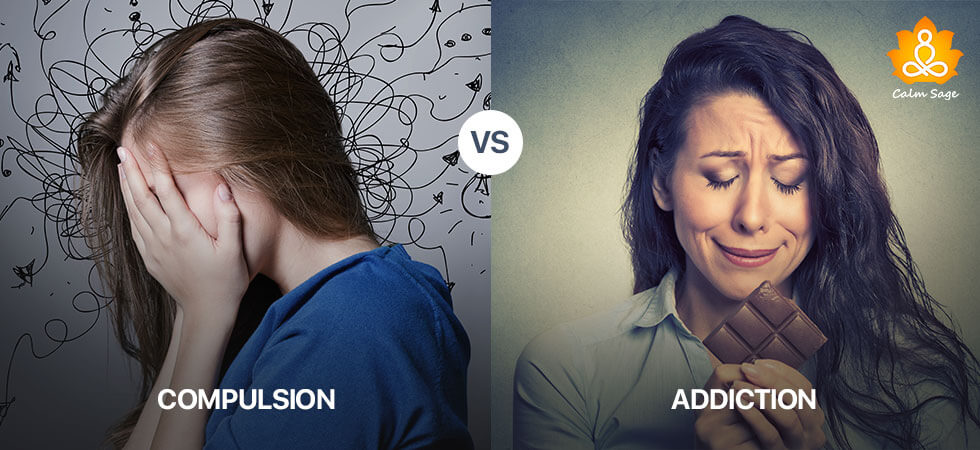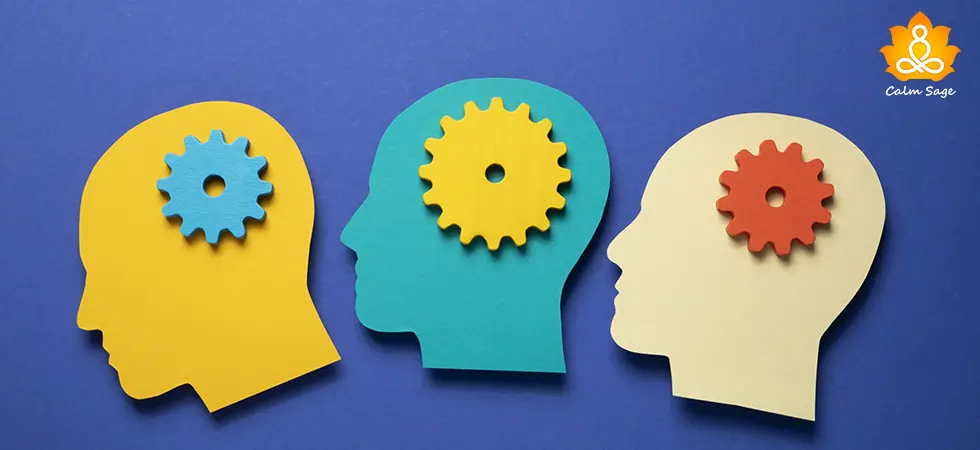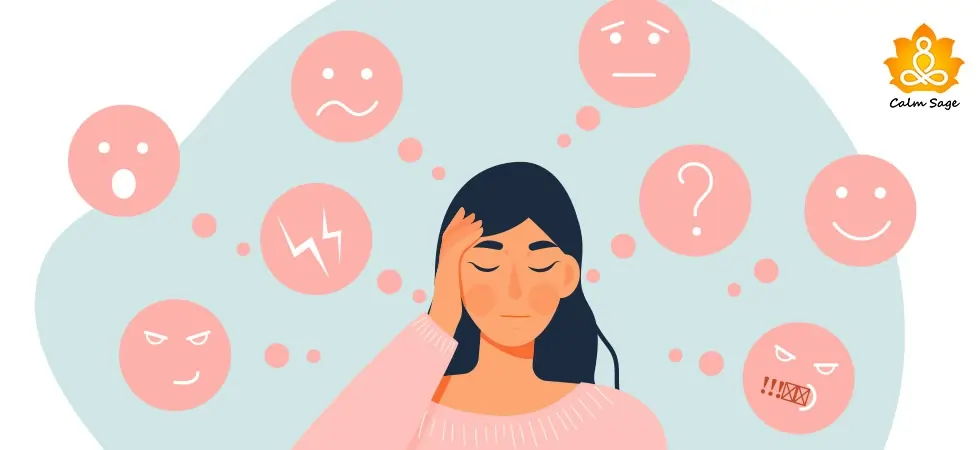Compulsion vs Addiction – What is the Difference

Addiction and compulsion are 2 terms used interchangeably because only a handful of people know they are different. Where addiction destroys a person both personally and professionally, compulsion is an overwhelming urge to do something, which, when satisfied, makes the person feel relaxed.
However, addiction is multifaceted. It is a strong and uncontrollable urge to consume substances or follow a behavior. To obtain the substance or follow a behavior, the person is ready to risk their career, relationship, and even life. Due to these and other differences that most of us are unaware of, in this post, we will discuss how addiction and compulsion differ and how they can be treated.
The more confusion between the two terms, the slimmer the chances of getting the proper treatment. So, without any delay, let’s discuss the overlap between compulsion and addiction.
Key Takeaways
- Compulsion is a strong emotion or an urge to perform a specific action. Most compulsive behaviors are driven by fear or a desire to feel safe.
- Addicts like the effect of dopamine, serotonin, and endorphins in the brain that substance causes. Hence, they cannot control their urges; to satisfy them, they can go to any length.
- The treatment of addiction and compulsion varies depending upon the level. However, CBT is the most common form of therapy that is used to treat them.
What is Addiction?
When a person develops a dependency on a particular substance or behavior and feels happy after consuming or behaving in that manner, it is called addiction. The dependency increases to such an extent that it interferes with relationships, career health, and other aspects of life.
According to the American Society of Addiction Medicine, addiction is a “treatable, chronic medical disease involving complex interactions among brain circuits, genetics, the environment, and an individual’s life experiences. People with addiction use substances or engage in behaviors that become compulsive and often continue despite harmful consequences.”
For addicts, stopping the use of the substance is very difficult because the brain becomes habitual to the addictive substance or behavior, and when it isn’t provided, cravings increase, and the ability to resist impulses decreases. Even if it means that they have to undergo mental or physical harm, they’re okay with it as they just want to feel that pleasure that the substance gives them to which they’re addicted.
Addiction is linked to the consumption of alcohol, drugs, and nicotine, and in some cases, behaviors such as gambling, internet use, or overeating are also a form of addiction.
Common symptoms of addiction
- The person is unable to stop themselves from using the substance.
- They show risky behavior, are obsessed about the thing they are addicted to, and consume it in large quantities.
- For them, hobbies and passions don’t exist anymore.
- Addicts live in solitude and denial and always struggle with legal and financial issues.
- Sleeplessness, change in appetite appearance, and withdrawal symptoms are commonly seen among addicts.
- Once they get addicted to a particular quantity, they start using more to get the same effect.
- Feel an intense urge to use the substance and are unable to stop it despite negative consequences.
- Show withdrawal symptoms when they no longer feel pleasure.
What is Compulsion?
It is an irresistible urge to perform certain tasks or rituals even when not required. Examples include washing hands, checking door locks multiple times before leaving, etc. Anxiety is the underlying factor for this type of behavior, and individuals show compulsive behavior because they want to prevent an event they fear.
People with compulsion have obsessive thoughts, and these unfold in their behavior, beliefs, and intentions, motivating them to perform compulsive behavior, which provides temporary relief. However, when such behavior is followed for a long time, it becomes a vicious cycle that interferes with daily activities and stresses the individual.
People with addiction develop a compulsion, and nearly 30% of people with compulsion have been substance abusers.
Common Symptoms Of Compulsion
- Perform repetitive actions even when not required, like checking locks, washing hands, cleaning, etc.
- Follow a pattern while doing things, whether it’s counting or organizing things.
- Unwanted thoughts and images.
- Avoidance of triggers.
- Feel the compulsion to perform a specific task.
Difference Between Compulsion And Addiction
While both addiction and compulsion involve a strong urge to engage in certain activities, they differ in several ways.
Addiction |
Compulsion |
|---|---|
| It is linked with pleasure or relief, even if it causes discomfort through substance or behavior. | It is driven by a strong desire to feel less stressed or anxious. |
| Consumption of substances or behavior stimulates the brain’s reward system, forcing the person to keep following the practice. | The repetitive behavior is not necessarily pleasurable. |
| Addiction is characterized by loss of control over the use of substances, cravings, and continuous use even when the consequences are harmful. | Obsessive thoughts or compulsive actions follow a person, and they feel in control while performing certain tasks. |
| Genetics, environment, and psychological factors play an important role, and a significant change in brain structure and functioning is observed in addicts. | Genetics, environment, and psychological factors play an important role. |
| Have severe physical consequences. | It causes psychological distress and impairs daily functioning. |
| Addiction helps to escape stressful situations by providing some pleasure. | Provide temporary relief by performing a sense of control, especially over their lives. |
| There is no logic behind the use of substances or behavior. They do not recognize their reactions and the adverse effects of addiction. They are in denial, and for them, there is no problem. | There are chances that the individual knows their compulsion is not realistic. They know they are performing a task excessively, yet they cannot control the urge to perform compulsive behavior. |
| Provides temporary satiation. | Does not cause any feeling of satiation or pleasure. It just provides a sense of relief from anxiety. |
One of the most significant differences between compulsion and addiction is how they are perceived. If you are somebody with compulsive behavior, you may feel relieved when participating. However, there will be no sense of pleasure. Whereas if you are into some substance abuse or have an addictive behavior when you follow it, you probably will experience pleasure by following those behaviors.
This means compulsion develops as a way to relieve exit or fear. Say if you are scared of getting sick or contaminated, you might develop a compulsion to do excessive cleaning. But when this practice is followed for longer, it will cause emotional turmoil.
With addiction, the motivating factor is the desire to use the substance or engage in behavior that gives pleasure. This pleasure can be felt in different ways regardless of the consequences, such as financial issues, mental and physical problems, breakups, legal consequences, or decreased self-esteem.
If you are an addict, there might come a point in your life when you won’t enjoy the addictive behavior and you would just want to feel good. Such a feeling is called withdrawal, leading to stopping using substances. Sometimes, this withdrawal or the sense of not feeling pleasure with the addiction leads to compulsion, as the original motivation is to feel good.
Denial versus Reality
Another difference between compulsion and addiction is acceptance and awareness of reality. A person with compulsive behavior is aware that they are obsessed with a certain ritual or an activity that is not realistic, yet they feel that urge to fulfill it. This disturbs them, and they have obsessive thoughts, yet they do it anyway as it helps them feel relieved.
However, with addiction, that is not the case, as the logic is completely detached. There is no logic behind the actions a person performs. They don’t even recognize the negative consequences that addiction is causing, and it becomes challenging for them to realize that substance use or behavior is causing problems in life. Only when the person identifies the factors does the recovery process start.
Anxious Thoughts versus External Indicators
Addiction and compulsion also differ in terms of triggers that lead to such frequent behavior. Compulsion is related to internal stimuli like distressing thoughts, whereas addiction is mainly related to external factors. Intrusive thoughts relate to compulsion. In addition, the thoughts are triggered by various causes like emotional state, environment, substance exposure, and others.
How do Addiction And Compulsion Overlap?
There is always an overlap between compulsion and addiction because compulsive behavior serves the same purpose as addiction. This means if you find temporary relief or escape from discomfort by following a compulsive behavior, you are getting addicted to it. In cases like gambling, eating, and playing online games, where the behavior stimulates the brain’s reward system, it is the same as the consumption of addictive substances.
When addiction develops, the urge to perform an act compulsively also strengthens. For example, a person who is addicted to a substance will have a strong compulsion to return to the substance without thinking about the consequences.
Negative effects of Addiction and Compulsion
Both addiction and compulsion share some common characteristics that negatively impact individuals. Here are some common effects:
- Loss of control.
- Engage in an activity or behavior even when there are negative outcomes.
- Strong urge to engage in behavior that might be harmful.
- Need to cope with stress, anxiety, or negative emotions.
- Are not concerned about self-well-being.
- Live in social isolation and don’t trust others.
- Face financial difficulties.
- Decrease productivity.
- Ruined relationships.
How can Compulsion and Addiction be treated?
To treat compulsion and addiction, a multifaceted approach that combines psychological therapies, medication, and support systems must be adopted.
Cognitive Behavior Therapy (CBT): CBT is a common therapeutic approach to treating both conditions. It involves understanding thoughts, feelings, and behaviors and developing healthy coping strategies.
Response prevention therapy:
Compulsion can be treated through this therapy, as it helps the individual respond to fears more effectively. Certain exercises can make individuals face smaller fears and work up to the bigger ones.
Medication-assisted treatment”
Addiction medicine combines various medications such as selective serotonin and others that help people undergo substance abuse treatment.
Group therapy : Group Therapy is For people who feel isolated as they do not get support, Group Therapy can help them create bonds and recover from addiction.
In some cases, medication can also be used to manage the symptoms of craving or compulsive urges.
For addicts, the first approach is to attend a rehabilitation program, undergo therapy, and do some skill-building. Also, the person can prevent relapse by being a part of a 12-step program like Alcoholics Anonymous, which also provides valuable support.
All these approaches should be done in the presence of a well-trained professional psychologist or therapist to offer such therapies. Also, remember that this treatment will be long-term and requires patient perseverance and ongoing support.
Compulsion and addiction an escape from discomfort
While there are a lot of differences between addiction and compulsion, they both have similarities; therefore, when you find somebody following certain practices, you can’t just label them as an addict or a person with compulsion. Both conditions differ, and how people take them is also different.
Compulsion and addiction have an impact on mental, emotional, and physical health and destroy relationships and daily functioning. However, with proper professional help and support, these conditions can be treated and managed. Once the nuances between the two conditions and their differences are understood, providing a treatment plan and support to the person struggling with either becomes easy.
Always remember compulsion is not motivated by physical addiction, while in addiction, desires are what leads to it.




















